- Top Page
- Events
- Yearly events
- Yearly events (October–December)
Commemorative Festival of Reconstruction (first Sunday)
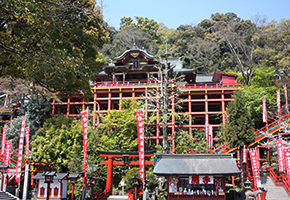
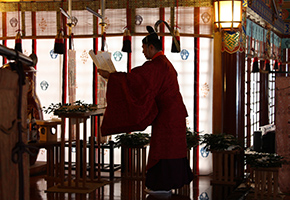
This festival is commemorative of the reconstruction of the shrine.
The Gohonden, the office, and other buildings were destroyed by a fire in May 1949. However, they were reconstructed in about 20 years. The first commemorative festival was held in 1970. Though times immediately after World War II were difficult, the shrine was reconstructed thanks to the efforts of the people who yearned to restore it.
Nukiho-sai Festival (Rice-harvesting ceremony) (late September–early October)
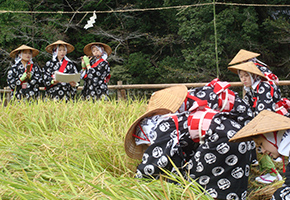
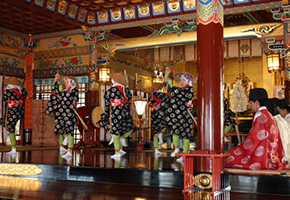
The Honenmai dance takes place in the Gohonden. Shrine maidens hold the Nukiho (picking rice ears) event (ceremonial rice harvesting) in a paddy field dedicated to the shrine.
Shichigosan Festival (November 15)
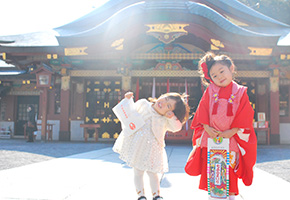
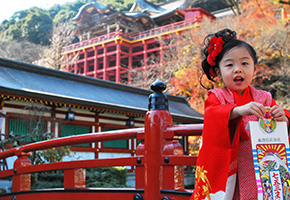
The festival for children who are three, five or seven years old is held from mid-October to late November. During the festival, chitoseame candies are given out at the shrine.
Shuki Taisai Festival (Fire-making ceremony) (December 8)
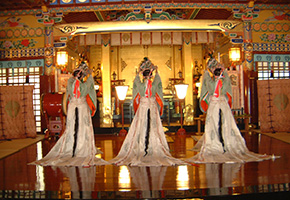
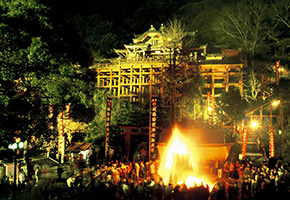
The fire-making ceremony is held at the Yutoku Inari Shrine in autumn. It pairs with the Hatsuuma Festival in spring.
In the past, the ceremony was held on November 8, according to the lunar calendar. Currently, it is held at the shrine on December 8, according to the solar calendar, as a night ceremony in the Niiname Festival. Underlying the ceremony is a belief that divine spirits, who were invited from the mountains to the paddy fields during the spring festival, finish their work upon the completion of harvesting and return to the mountains. The ceremony is held from sunset to midnight to thank the returning spirits and pacify them. After the chief priest has intoned a prayer, a torch is ignited before the shrine. The torch is then used to ignite oyama (wooden blocks of various sizes piled up and encircled with blue bamboo). At this moment, the visitors who have gathered are moved by the fire's splendor and cheer.
While the fire is dedicated to a god, it is said that the heat of the sun is at its lowest during the winter solstice ceremony; the ceremony is underlain by people’s hope for the resurgence of the sun and the arrival of spring. Additionally, it is said that by warming up with the divine fire, people can be cured of their illnesses and cleansed of sins they unknowingly committed Further, the divine fire is the object of their prayer for happiness in the coming year. These beliefs cause some people to hold the underclothes or photographs of their loved ones, who could not attend the ceremony, up to the divine fire or take burned pieces of charcoal back to their homes. At the Yutoku Inari Shrine, the amazake drink, made from new rice offered to the god, is given to visitors after the divine fire is made.
The origin of the ancient ceremony has not been clearly determined. Circumstances of the founding of the shrine suggest that as Manko-hime (the wife of Nabeshima Naotomo who married the lord of the domain of Kashima in 1662 and later founded the shrine) was originally a member of the House of Kazanin in Kyoto, Manko-hime, or her attendant might have introduced a fire festival to the shrine, as various kinds of fire festivals were observed in Kyoto at that time. Traditional beliefs are alive today, and people still sincerely hope to purify themselves with the help of the divine fire, praying for healthy and happy lives.
Year-end Purification Ceremony (December 31)
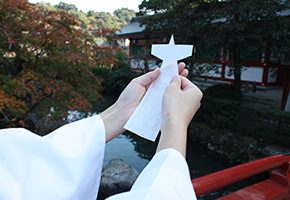
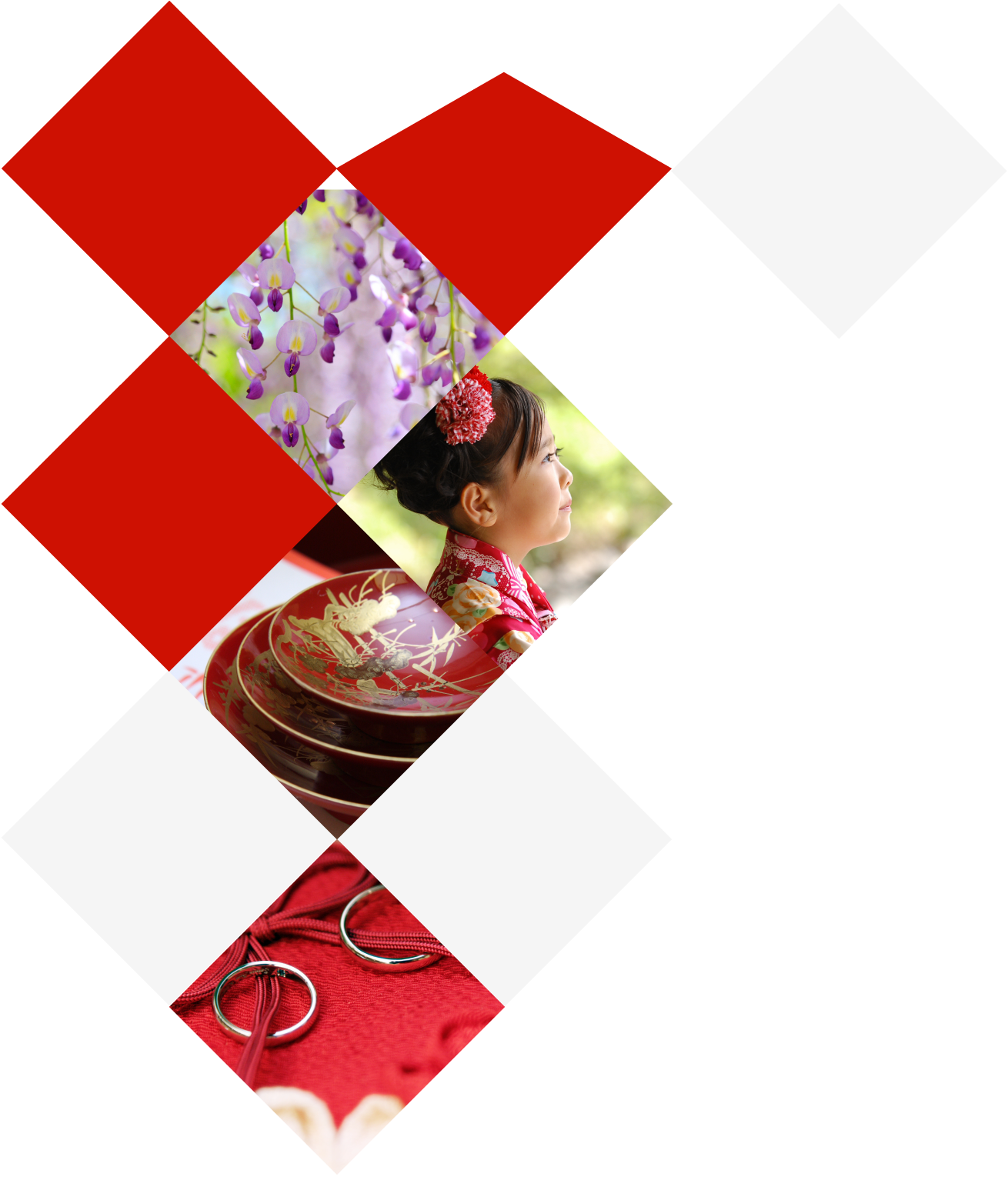




 Copyright © Yutokuinari Shrine. All Rights Reserved.
Copyright © Yutokuinari Shrine. All Rights Reserved.